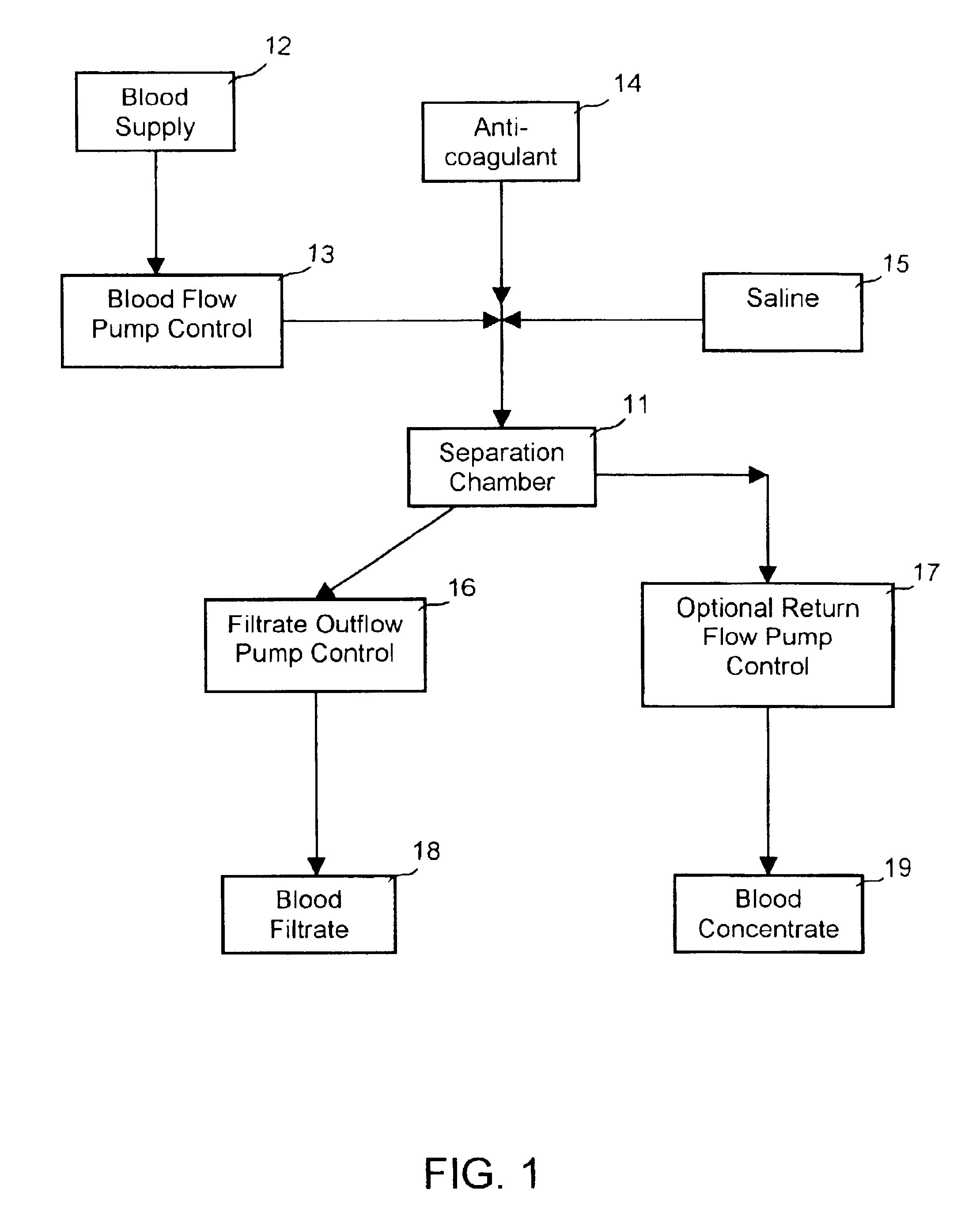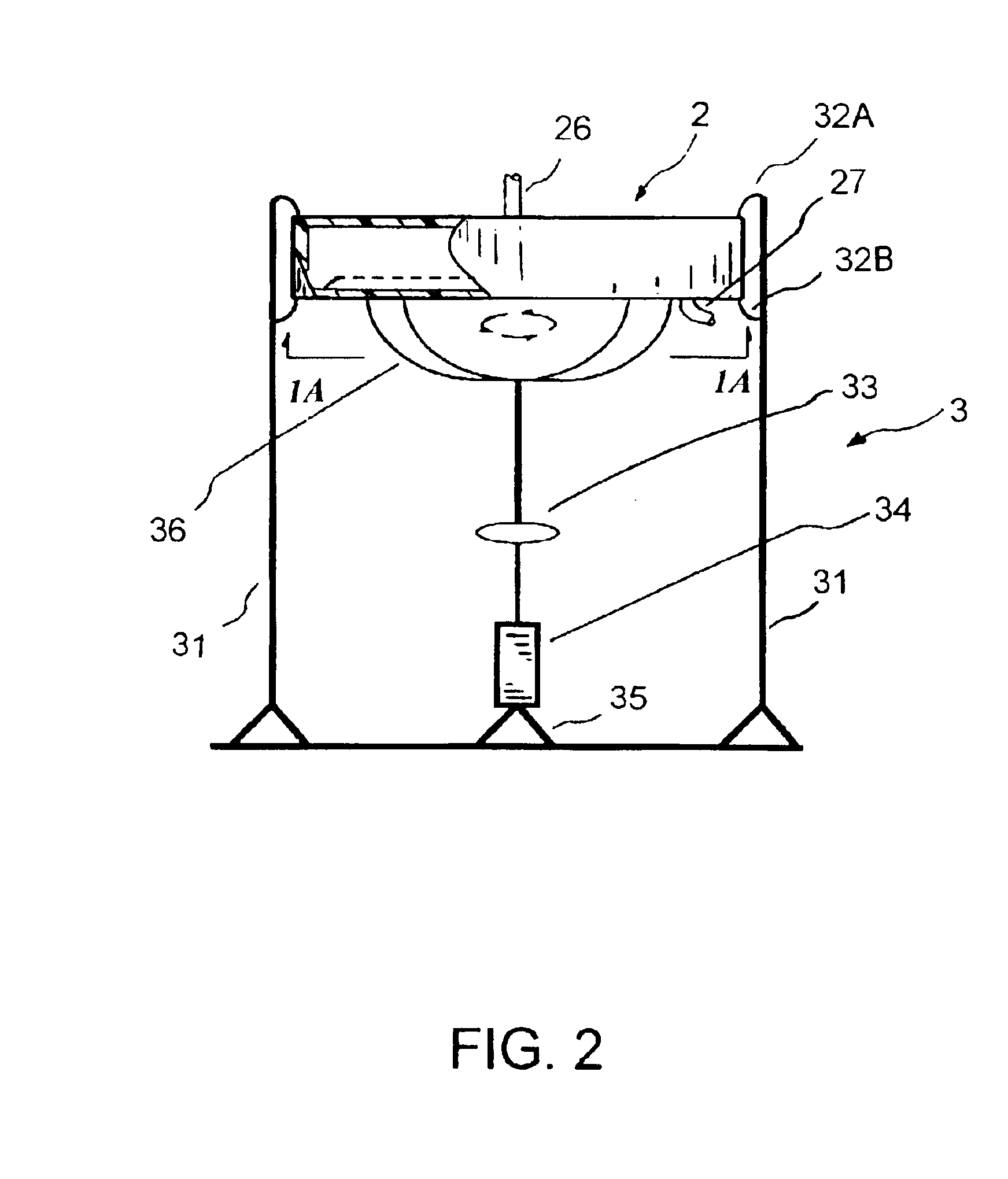Apparatus for enhanced plasmapheresis and methods thereof
a plasmapheresis and apparatus technology, applied in the field of medical apparatuses, can solve the problems of inability to fully utilize cells, and inability to achieve the effect of improving the separation of filtra
- Summary
- Abstract
- Description
- Claims
- Application Information
AI Technical Summary
Benefits of technology
Problems solved by technology
Method used
Image
Examples
Embodiment Construction
[0023]Referring to FIGS. 1 to 4, what is shown is an embodiment of the enhanced separation process employing a separation chamber comprising a filter membrane under an orbital motion. The enhanced separation process is particularly applicable for plasmapheresis and other medical applications, such as for blood fractionation, for blood autotransfusion, for bone marrow transfusion, for peripheral stem cell transfusion, and the like.
[0024]FIG. 1 shows a schematic diagram of an enhanced blood separation process employing a separation chamber comprising a filter membrane under an orbital motion of the present invention. The blood supply 12 to the apparatus 11 may comprise fresh whole blood, thawed blood, or partially fractionated blood. The blood supply is fed to the separation chamber 11 via a blood flow pump control 13 or other means for directing a blood into the separation chamber 11. To maintain the blood supply from coagulation, anticoagulant 14 may optionally be added into the blo...
PUM
| Property | Measurement | Unit |
|---|---|---|
| Density | aaaaa | aaaaa |
| Adsorption entropy | aaaaa | aaaaa |
Abstract
Description
Claims
Application Information
 Login to View More
Login to View More - R&D
- Intellectual Property
- Life Sciences
- Materials
- Tech Scout
- Unparalleled Data Quality
- Higher Quality Content
- 60% Fewer Hallucinations
Browse by: Latest US Patents, China's latest patents, Technical Efficacy Thesaurus, Application Domain, Technology Topic, Popular Technical Reports.
© 2025 PatSnap. All rights reserved.Legal|Privacy policy|Modern Slavery Act Transparency Statement|Sitemap|About US| Contact US: help@patsnap.com



